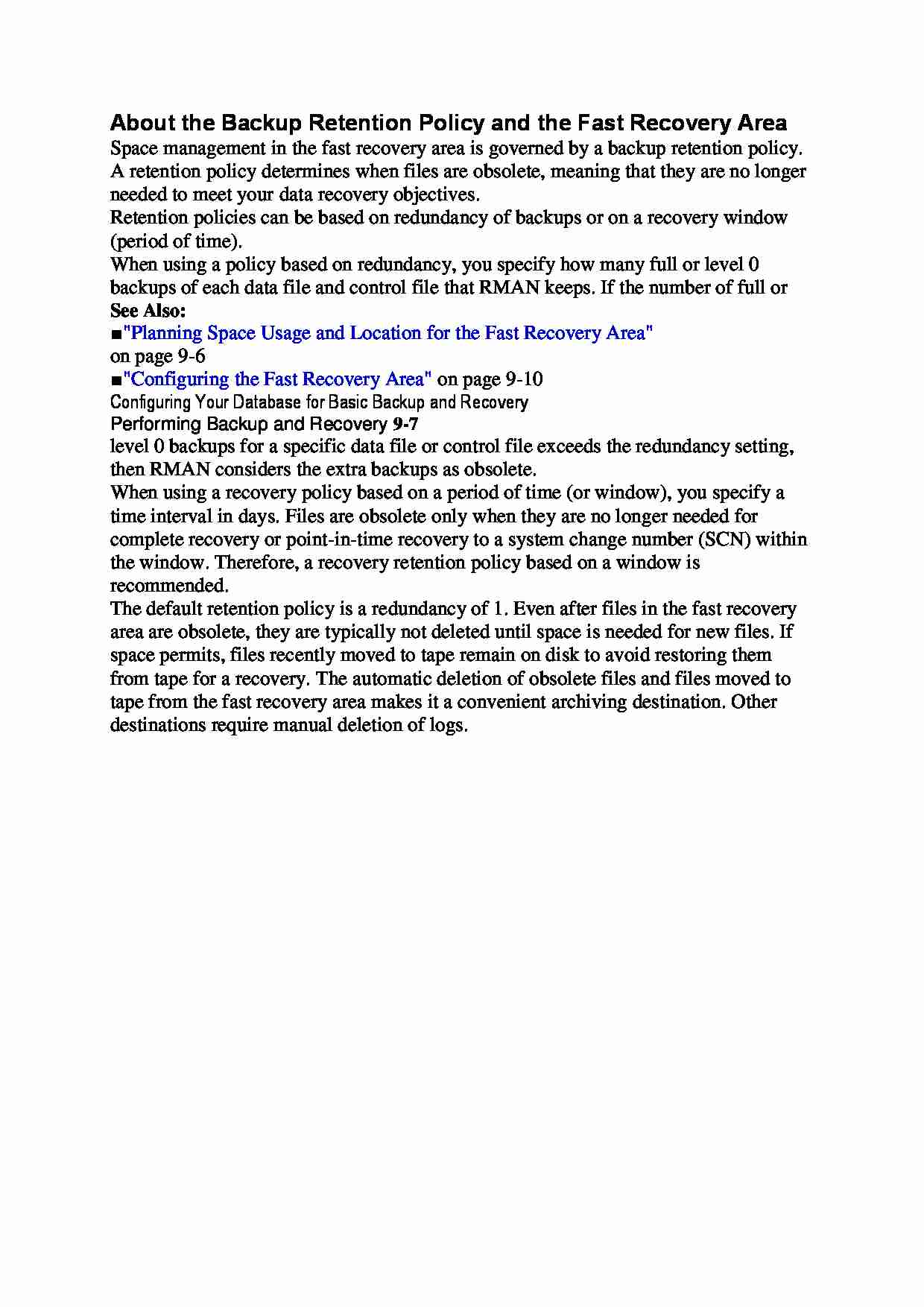
About the Backup Retention Policy and the Fast Recovery Area
Space management in the fast recovery area is governed by a backup retention policy.
A retention policy determines when files are obsolete, meaning that they are no longer
needed to meet your data recovery objectives.
Retention policies can be based on redundancy of backups or on a recovery window
(period of time).
When using a policy based on redundancy, you specify how many full or level 0
backups of each data file and control file that RMAN keeps. If the number of full or
See Also:
■ "Planning Space Usage and Location for the Fast Recovery Area"
on page 9-6
■ "Configuring the Fast Recovery Area" on page 9-10
Configuring Your Database for Basic Backup and Recovery
Performing Backup and Recovery 9-7
level 0 backups for a specific data file or control file exceeds the redundancy setting,
then RMAN considers the extra backups as obsolete.
When using a recovery policy based on a period of time (or window), you specify a
time interval in days. Files are obsolete only when they are no longer needed for
complete recovery or point-in-time recovery to a system change number (SCN) within
the window. Therefore, a recovery retention policy based on a window is
recommended.
The default retention policy is a redundancy of 1. Even after files in the fast recovery
area are obsolete, they are typically not deleted until space is needed for new files. If
space permits, files recently moved to tape remain on disk to avoid restoring them
from tape for a recovery. The automatic deletion of obsolete files and files moved to
tape from the fast recovery area makes it a convenient archiving destination. Other
destinations require manual deletion of logs.
... zobacz całą notatkę



Komentarze użytkowników (0)